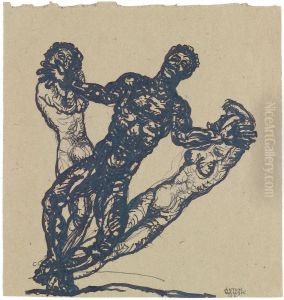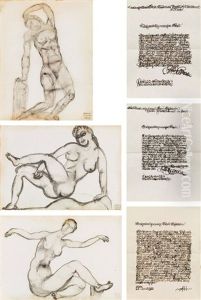Anton Hanak Paintings
Anton Hanak was an Austrian sculptor known for his expressive and dynamic works that often reflected themes of movement and the human form. Born on December 27, 1875, in Vienna, he showed an early interest in the arts. Hanak studied at the School of Applied Arts in Vienna and later at the Academy of Fine Arts under the tutelage of Edmund von Hellmer and Caspar von Zumbusch, two prominent sculptors of the time. His education provided him with a strong foundation in traditional techniques, which he later expanded upon with his unique style.
Hanak's work was significantly influenced by the Vienna Secession movement, an art movement that sought to break away from traditional academic art. His sculptures often featured elongated forms and were marked by a sense of rhythm and fluidity, characteristics that aligned with the Art Nouveau style. Hanak also had a keen interest in the human body, which led him to create sculptures that captured the intricacies and emotions of human figures. His ability to depict motion and psychological states in static forms won him acclaim.
Throughout his career, Hanak held various teaching positions and influenced a new generation of sculptors. He taught at the School of Applied Arts in Vienna, where he had once been a student, and his teaching emphasized the importance of studying the human form. Hanak's legacy includes numerous public sculptures and monuments, as well as smaller works that are held in collections throughout Austria and beyond.
Anton Hanak passed away on January 10, 1934, in Vienna. His contributions to sculpture and his role in shaping the Vienna Secession movement have cemented his place in the annals of Austrian art history. Hanak's work continues to be studied and admired for its vitality and expressive power.


